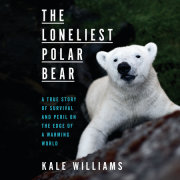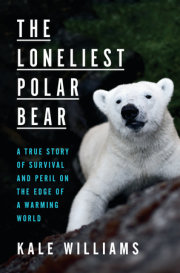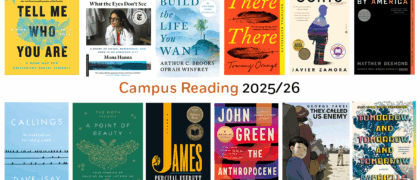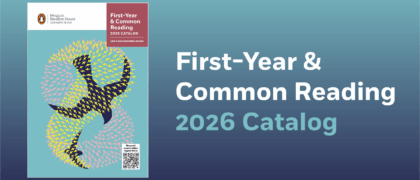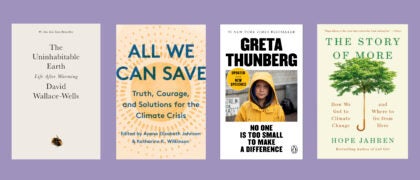Chapter 1AbandonedShe weighed scarcely more than a pound, roughly the size of a squirrel. Her eyes and ears were fused shut. Her only sense of the world around her came from smell, and her nose led her in one direction: toward the gravity and heat of her mother, a six-hundred-pound polar bear named Aurora.
Their den was made of cinder block, painted white and illuminated by a single red bulb in the ceiling. The floor was piled high with straw. The air, heavy with captive musk and kept artificially cool to mimic the Arctic, was pierced periodically by the cries of Nora, a pink-and-white wriggling ball of polar bear, tucked into the folds of her mother’s fur.
The tiny cub slept a lot, waking only to nurse, which she did greedily and often, with a soft whir that sounded like a tiny outboard motor. She suckled even in her sleep, her curled tongue lapping at the air.
Around nine o’clock on the morning of Nora’s sixth day, Aurora rose, stretched, and ambled out of the den. The cub was completely reliant on her mom, alone and vulnerable without her. As the chilly air crept in around her, Nora cast her head from side to side, screeching as she searched for something familiar, something warm. When she found no answer to her cries, she began to wail.
Outside the denning compound, three women monitored what was happening. Zoo veterinarian Priya Bapodra peered at a grainy, red video—a live feed from inside the polar bear den—as a pixelated Nora squirmed on the screen in front of her. Zookeeper Devon Sabo took notes. Carrie Pratt, a curator, looked on. For five days, the women had worked in rotating shifts, keeping a twenty-four-hour watch on Nora, craning their necks to discern what was happening on the video monitors and pressing headphones to their ears, listening for any signs of distress.
When Nora was born, on November 6, 2015, she was the first polar bear cub to live more than a few days at the Columbus Zoo and Aquarium, which had opened in 1927. The den where she spent her first days was nothing like where she would have been raised in the wild, but it was as close as humans could muster in the suburbs of central Ohio. Nora’s birth in that concrete den represented all the ways humans and polar bears were inextricably tangled—for better and for worse. To some, Nora would become the wild north, made approachable, an ambassador for a species few would ever see in the wild. To others, she was the physical embodiment of the political battle over whether humans were causing irreparable harm to the planet, a question settled by science long before her birth. Whether she liked it or not, she and her species had become the sad-eyed face of climate change. She represented the damage humans had done to the earth, and she offered the thinnest hope of setting things right.
But to the keepers in the trailer, she was not an ambassador or a symbol. Nora was a helpless cub who was in peril.
And so, at 8:55 a.m., as Aurora took one step away from Nora and then another, the women steeled their nerves and tried to stay calm. Aurora had left Nora alone before, but only for brief periods. In the wild, a mother polar bear never leaves the den, even to eat. The eight-year-old mother wandered down a hallway, past the food her keepers had left for her, and toward the other side of the enclosure. Sabo made a note in the log:
“Aurora gets up and goes into pool room.”
Soon after, phones around the zoo buzzed. An alert went out over a text message thread to the rest of the animal care team, letting them know something was amiss. Ten minutes passed. Maternal instincts are innate in animals, but Aurora appeared conflicted.
Bapodra kept an eye on the clock. Twenty minutes now.
As the time ticked by, the tension in the trailer grew. Nora’s cries reminded the keepers of their own children, only louder and more urgent. As long as her vocals were strong, they were willing to wait.
Most polar bear cubs born in captivity live less than a month. Only about a third survive to adulthood. When keepers are forced to raise the cubs themselves, the odds are worse. Cubs can’t regulate their temperature on their own. Without their mothers, they succumb to disease and infection. They suffer from malnutrition and bone issues because their mother’s milk is impossible to replicate. The keepers knew all that when they created Aurora’s birth plan, drafted long before she went into labor. The twenty-three-page document was kept in a binder in the denning compound, and each member of the team had a copy on their phone. The plan accounted for all conceivable scenarios, including pulling a cub from its mother. “It will not be possible to return the cubs to the female when their condition improves or they have been stabilized, as she will not accept them,” the plan read.
The women in the trailer knew that if they stepped in to help Nora, there would be no going back. The responsibility of raising the helpless cub would fall to them. Between them, the women had decades of experience hand-raising jungle cats, livestock, and primates. But none of them had ever raised a polar bear. There were only a handful of people in the world who had even tried.
At the one-hour mark, something had to be done. Sabo went into the compound, carrying more straw to coax the wandering mom back to her cub. She walked along the narrow path called the keepers’ alley and quietly dropped the straw next to the den where Nora lay crying.
Aurora didn’t respond.
Another hour went by and Sabo went into the denning compound again. This time she brought fish. On the text thread, Sabo relayed what was happening. Soon, other keepers showed up to watch. Questions swirled in their heads. Could something have driven Aurora from the den? What else could they do to encourage her to return? How long should they wait?
Three hours had gone by, and now the keepers gave Aurora a deadline: one more hour. If Nora appeared to weaken, they would swoop in sooner. None of them wanted to raise Nora themselves. Her odds would plummet the instant they plucked her from the den. But they didn’t want to stand by and watch her die, either. Left alone, her odds were zero. They grabbed a plastic bin and lined it with heated water bottles and blankets. Without her mother’s warmth, Nora had to be getting cold.
At 12:43 p.m., almost four hours after Aurora left the den, Nora’s cries weakened ever so slightly, and she looked sluggish. It was November 12, Bapodra’s birthday, and the veterinarian had plans with her husband that night. She called and told him to put the plans on hold.
It was time.
Copyright © 2021 by Kale Williams. All rights reserved. No part of this excerpt may be reproduced or reprinted without permission in writing from the publisher.



